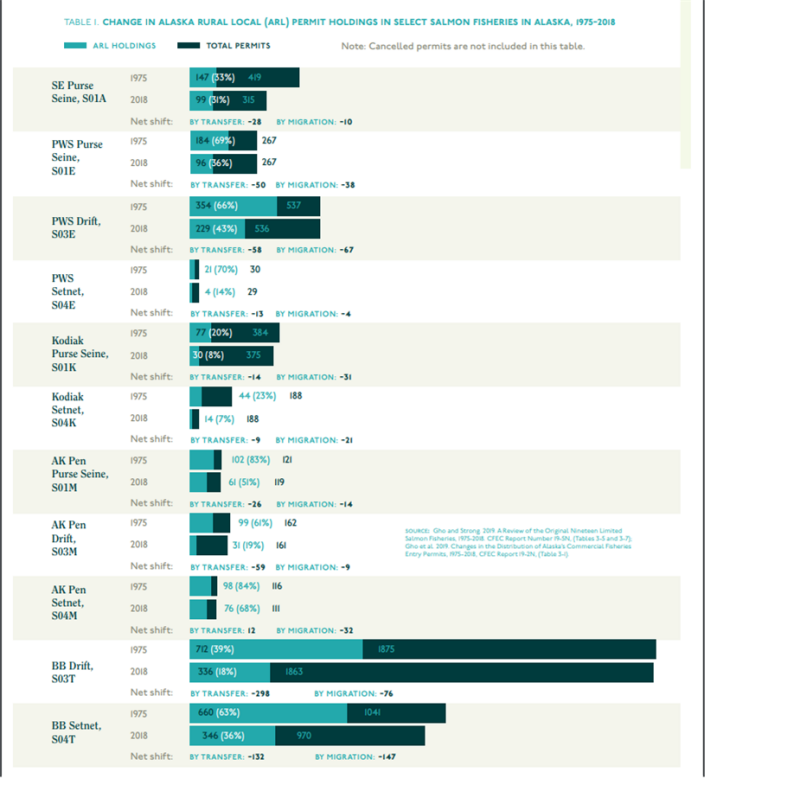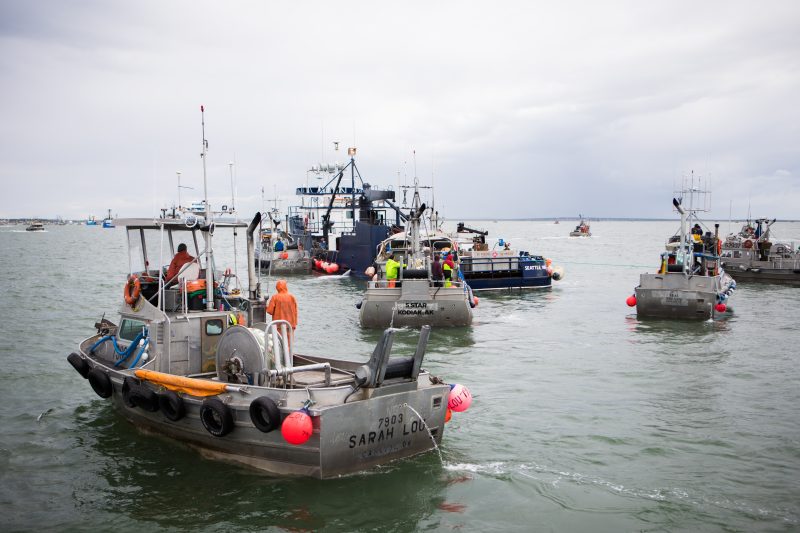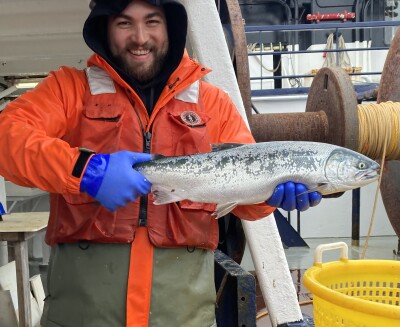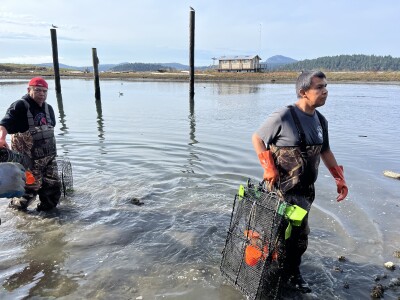The preliminary value to fishermen of the nearly 41 million salmon caught this summer at Alaska’s largest fishery at Bristol Bay is nearly $248 million, 64 percent above the 20-year average. That figure will be much higher when bonuses and other price adjustments are paid out.
But as with the fish bucks tallied from Alaska’s cod, pollock, flounders and other groundfish, the bulk of the Bay’s salmon money won’t be circulating through Alaska’s economy because most of the fishing participants live out of the state.
In 2017, for example, 62 percent of gross earnings from the Bristol Bay driftnet fishery and 40 percent from the setnet fishery left Alaska as nonresident earnings.
That’s due to the region experiencing an overall 50 percent decline in local permit holdings since Alaska began limiting entry into commercial salmon fisheries in 1975. Combined, residents of the Bristol Bay region now hold less than one-quarter of the region’s salmon permits.
The fishing communities of Pilot Point, Levelock, Egegik, Ekwok, Pedro Bay and Nondalton, respectively, lost more than 75 percent of their local permits.
The numbers come from a new report titled “Righting the Ship: Restoring Local Fishing Access and Opportunity in Bristol Bay Salmon Fisheries,” which examines how Alaska fisheries policy dating back nearly 50 years has gradually disenfranchised local residents from economic opportunities.
“In Bristol Bay communities, there’s been a sharp and costly decline in the number of people who are able to take part in the world’s most valuable salmon fishery. For the State of Alaska, this has led to a staggering loss of livelihood opportunity and personal income in a region often celebrated for its fishery abundance and wealth. The fact that much of this loss has occurred among Alaska Native fishing families and villages is especially concerning,” said Rachel Donkersloot who authored the 40-page report for The Nature Conservancy in Alaska.
A 2021 analysis of change in permit holdings among the more than 10,000 local and nonlocal shareholders of the Bristol Bay Native Corporation shows a 38 percent decline in setnet and drift permit holdings between 1980-2018 (1,147 to 716 permits). Holdings for local shareholders suffered a greater loss of 47 percent (1,001 to 531 permits).
Local participation has primarily declined as a result of permit transfers and migration of permit holders, the report says, adding “Since implementing Alaska’s Limited Entry Program, legislators, researchers, and rural and Alaska Native community leaders and fishermen have grappled with the consequences of creating a freely transferable permit system (i.e., permits that can be gifted, inherited, and/or bought and sold on the open market).
While it focuses on Bristol Bay, the report also describes the ways in which the limited entry system disproportionately disadvantages rural and Alaska Native fishing families and communities across the state.
It points out that statewide rural, local permit holdings have experienced a net loss of 2,459 permits since 1975, while urban and nonresident permit holdings have experienced net gains.
Between 1976-2016, for example, the villages of Angoon, Kake, Metlakatla and Hydaburg each suffered a loss of more than 60 percent of local permit holdings in the Southeast region. On Kodiak Island, the Native village of Ouzinkie lost 71 percent of its local permits and 61 percent at Old Harbor.
A key objective of the Limited Entry Act was to keep fishing rights in the hands of Alaskans dependent on fisheries, especially rural residents with limited economic opportunities. However, the opposite has happened.
“These shifts in who has access to Alaska’s commercial fisheries represent a yet-to-be fixed policy failure of the State,” the report states.
It documents how Limited Entry continues to negatively impact rural and Native fishing communities including “limited access to financing for permit purchases; a lack of earnings, credit, and credit history; higher borrowing costs; lower personal wealth; limited experience with debt, credit, and financial management; and limited access to and knowledge of capital markets and financing options.”
“A key problem with the application process was that it was modeled after a ‘non-rural fisherman’ in that it assumed that all fishermen were highly efficient, full-time fishermen, fully entrenched in the market economy, who “maintain written records of income, (with) sufficient education to comprehend a complex application process,” the report says, adding “these shortcomings were exacerbated by language and cultural barriers, poor outreach, and misinformation.”
The report outlines the programs and regulations that have been implemented to promote entry opportunities and support rural fisheries access in Alaska. It also describes the constitutional and statutory constraints that limit the design of these programs and, for example, points to solutions based on residency requirements that have been ruled unconstitutional.
“Rural fisheries access cannot be sufficiently preserved with the suite of tools available under current law. Legal interpretations have constrained efforts to ensure that the State’s natural resources benefit its citizens leaving open the question of whether the State constitution allows for the kinds of solutions that are actually going to work,” it states, adding that “new solutions are clearly needed to restore and sustain viable rural and small-scale fishing ways of life that underpin healthy rural communities.”
The report also presents a suite of policy options for sustaining rural fishery participation that have been used in other state and countries, and “plots a general course forward to support the Bristol Bay region and the State in advancing carefully tailored solutions to one of Alaska’s longest standing resource problems.”
“Such provisions could be piloted in Bristol Bay before expanding into other regions,” it adds. “Forty-five years after the first limited entry permits were issued, the State of Alaska has the benefit of hindsight, and the playbook of lessons learned and gains made in other fishing regions that are ahead of Alaska on this front. It’s time to catch up.”








